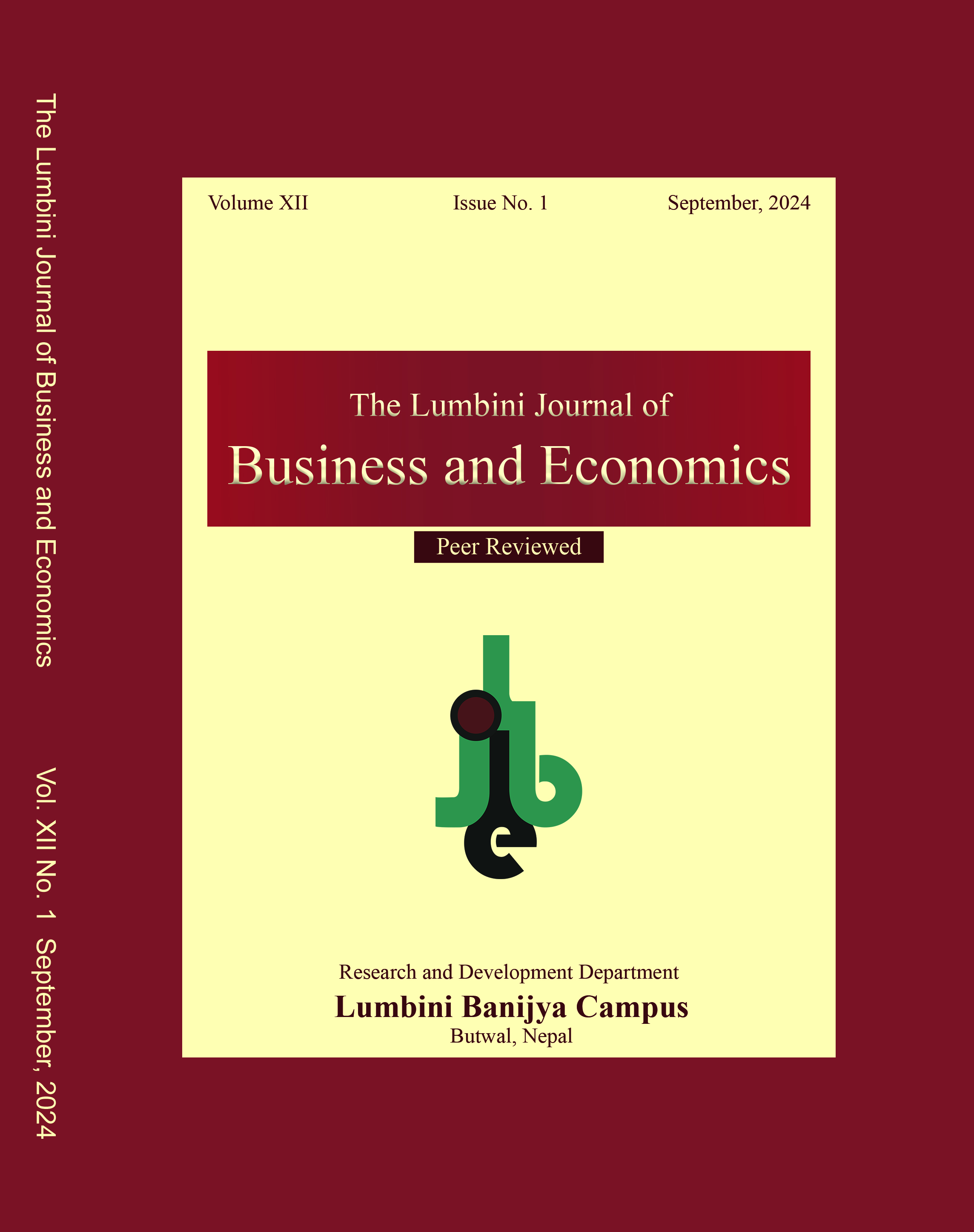Digital Wallet Adoption Through Service Quality in Rupandehi District of Nepal
DOI:
https://doi.org/10.3126/ljbe.v12i1.70324Keywords:
Perceived ease of use, perceived usefulness, service quality, financial risk, adoption of digital walletAbstract
Purpose: This research aims to investigate the dynamics of digital wallet usage in Rupandehi District considering service quality and accommodate the elements that influence digital wallet adoption.
Methods: Data were obtained via a self-administered questionnaire using a convenience sampling method. Three hundred ninety seven bank customers, who use mobile banking services, were selected as sample. Smart PLS 4 was used to evaluate the model. The questionnaire addressed two components of the technological acceptance model namely perceived ease of use and perceived usefulness. Service quality model was used considering perceived risk and financial risk.
Results: Perceived ease of use, perceived usefulness and service quality have positive and direct effects on the adoption of digital wallets. The study reveals the consequences for businesses and customers in Nepal’s changing digital environment through service quality and digital wallet usage.
Conclusion: Investments and internet connectivity and mobile networks are keys to expanding digital wallet access. It is important to understand technology acceptance, service quality, and financial risk in digital wallet adoption.




